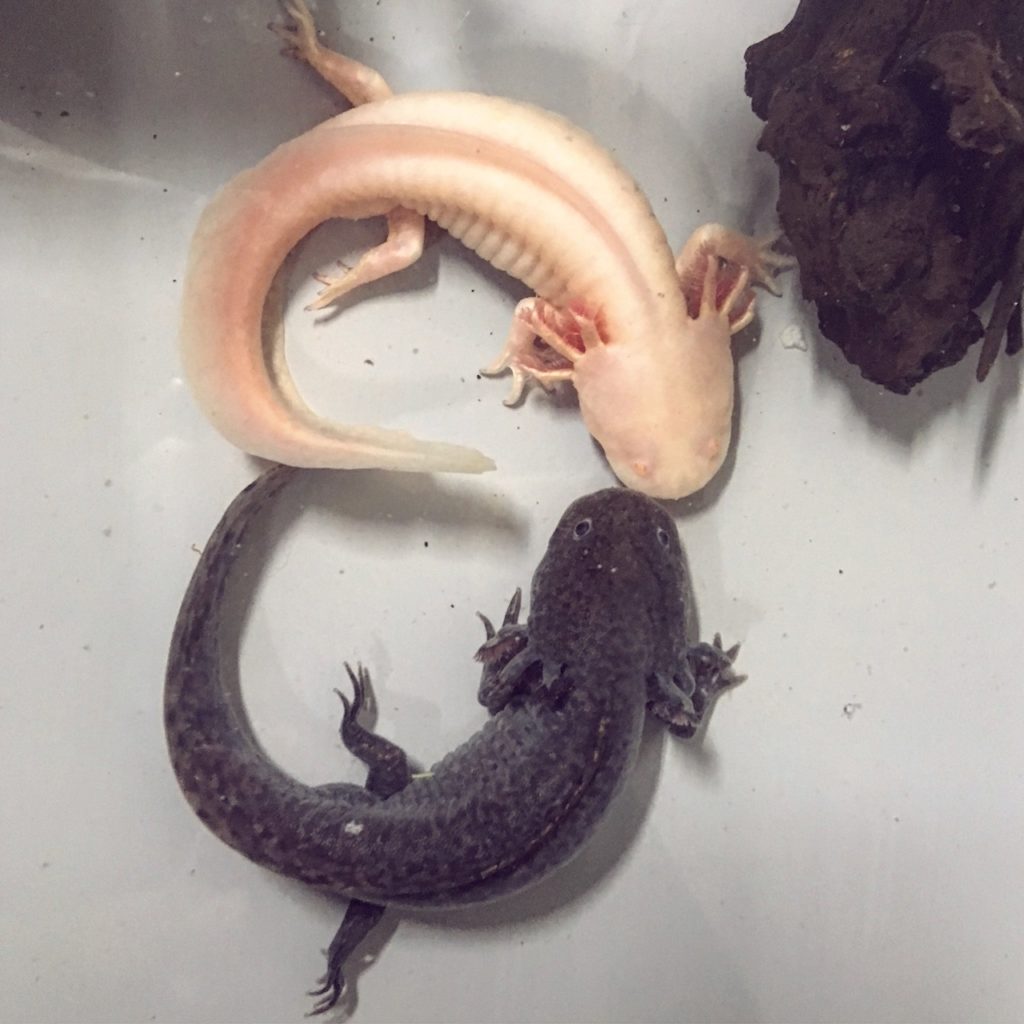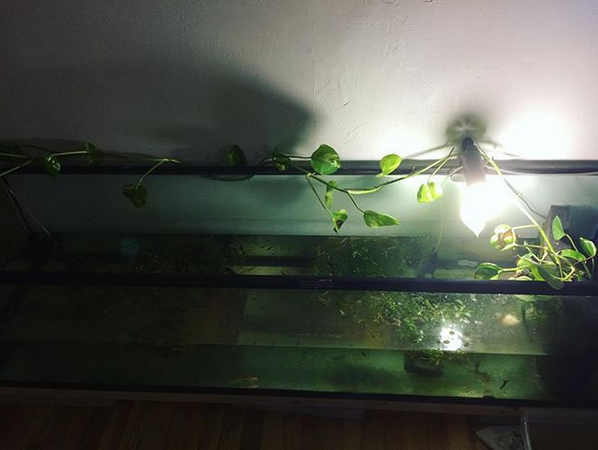
Tip #1: Most axolotls will have grown out of their cannibal phase by the time they reach a full body size of 3.5 to 4 inches. Make sure to pair axolotls which are similar in size. Cannibal phase or not, if one’s head can fit inside the other’s, it will be considered food!
Tip #2: Choose a time when both axolotls seem relaxed, healthy and have a full belly. It’s very important to feed them well beforehand!
Tip #3: A protein-deficient axolotl is likely to bite tankmates, regardless of age, relative size and other circumstances. So make sure you’re feeding an appropriate diet, and if your axolotl is a rescue, give them a couple weeks of adequate nutrition before introducing them to your other lotls.
Tip #4: Supervise the first interaction and get ready to separate if needed. Getting in each other’s space is okay. Sniffing each other is okay. Being a little jumpy is normal too. Fast stomping towards the other with the nose down to the ground is a bite waiting to happen, so get ready to intervene. Snapping right in front of each other’s face is more of a threat, but still a sign that the axolotl isn’t ready to accept a tankmate. Separate and try again in a few weeks.
Tip #5: If all goes well for the first few minutes, supervise at feeding time for the first several days. That’s usually when aggressive behavior comes out. Try to feed in separate areas of the tank so that they aren’t tempted to go for each other’s food. Stealing food from each other’s mouths is a no-no, as it encourages bites on both sides. Snapping close to each other’s limbs is also not good, so try not to let the food end up close to someone’s toes. Feed the more food-aggressive axolotls first, then feed the more timid ones at a safe distance from the more voracious ones.
Tip #6: If you notice that one axolotl tends to hide a lot, won’t come out at feeding time, and turns away from food, they are either feeling sick or are scared of a food-aggressive tankmate. Separate and try again once both animals seem happy and healthy.
Tip #7: If a pair doesn’t get along right away, don’t get discouraged. Separate them and try again in a few weeks. Just because it didn’t go well last time doesn’t mean it won’t work out next time. Axolotls live in the moment, they don’t hold grudges. I promise!

